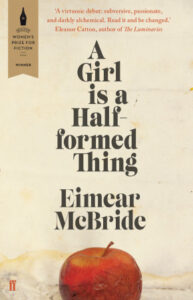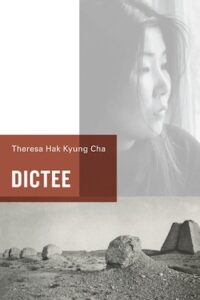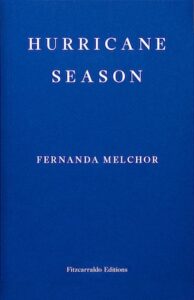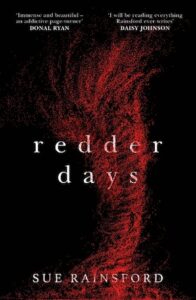Groundbreaking women
by Sue RainsfordWhat does it mean to break ground? To make an incision in soil so that building can begin or, more loosely, a reference to genius or creative prowess – some kind of innovation. What does it connote for the female body, given it’s a rare woman that hasn’t been told to lie down on the ground, the better to be trampled or secreted away into soft, dark earth? When women break ground, what do they risk losing or stand to gain? Rather than bringing something new into our field of vision, it often seems they are dealing in ancient knowledge; letting it rise up into view.
Francesca Woodman’s self-portraits
From 1972 to 1980 Francesa Woodman produced soft-focus photographs. In these mostly black-and-white images Woodman took her own body as subject, but they do not depict a young American woman who spent her formative years in Italy before suiciding at the age of 24. What we see instead is a female body dispersing in space or staggering into a new creaturely state. What is the difference, Woodman seems to ask, between my body and a shadow? My body and a tree? My body and a bucket of eels? Her recurrent use of the long exposure, too, remains radical for its coupling of the female form with a premise so simple, so deft, so infuriating: the longer you look, the less you see.
 A Girl is a Half-formed Thing by Eimear McBride
A Girl is a Half-formed Thing by Eimear McBride
From the opening lines of Eimear McBride’s award-winning debut novel, we can tell that this is language in a state of emergence. It takes longer, perhaps, to realise what is at stake when a writer positions their reader as witness to a text that is occurring in tandem with the experiences it captures. This depiction of a nameless girl’s inner and outer life feels generated, expelled rather than written. I return to it often as a testament to trauma and to the act of writing itself, and to what it means when the two enfold.
Depicted in Jewish mythology as Adam’s first wife, formed not from his rib but from the dust alongside him, and ultimately banished from Eden because she refused to lie down during sex, Lilith is a ripe alternative for the archetypal female. Kiki Smith’s sculptural portrayal of Lilith is remarkable not only as a work that captures female potency incarnate, but because it presents that potency as ontological fact. Smith’s rendering is one of unpoliticised resistance; when we look this Lilith and her blackened skin – her eyes are the only part of her unscorched following the blistering force of her expulsion – we glimpse what it means to be born into resilience.
Ban en Banlieue by Bhanu Kapil
Bhanu Kapil’s extraordinary exploration of body and politics is written from a supine position. Ban is a brown girl who lies down on the ground during a race riot in London in 1979, and the book lingers in this state of exposure, following the gesture to its logical conclusion. This book is not a series of clauses strung together across its pages – it feels reductive, in some ways, even to call it a book. It is less a piece of printed matter than a wound, a tangible remnant of violence.
 Dictée by Theresa Hak Kyung Cha
Dictée by Theresa Hak Kyung Cha
This is another ‘book’ that pushes out the boundaries of the term; it is at once a novel, a prose poem, a biography and a photo book. Over the course of nine chapters structured around the muses of Greek mythology, Dictée interweaves the voices of Cha’s mother, the seventeen-year-old Korean martyr Yu Guan Doon and Joan of Arc. By the end, Cha has imagined into existence a divine feminine force, a reconfiguring she knows to be necessary if female subjectivity is to play out in the real world.
In the Cut by Susanna Moore
Susanna Moore’s chilling book is a study in the myriad ways – literal and physical, insidious and intangible – that women encounter brutality. But it is remarkable for its highly seductive, highly problematic sex scenes; passages which show the deep entwinement of eroticism and violence. It wouldn’t be accurate to say that Moore eroticises the peril facing women; rather, she makes no attempt to soften the fact that women must confront their precarity if they want to engage sensually – or in any way meaningfully – with the world.
 Hurricane Season by Fernanda Melchor
Hurricane Season by Fernanda Melchor
Fernanda Melchor’s novel speaks, too, to this conflation, but we see it continually and wilfully meted out by perpetrators rather than passively re-enacted. Melchor has spoken of risking pornography in representations of Mexico’s border territories and their unfathomable number of femicides, offering as she does little vantage point beyond that of sexual predators. But this is fiction working as inquiry; where the novel is graphic is also where it is asking urgent questions about what it means to live with a level of gendered violence so pervasive it has become an atmosphere, a climate.
Alisoun Sings by Caroline Bergvall
Caroline Bergvall’s book-length monologue is told in many voices. It takes root in Chaucer’s iconic Wife of Bath, and to read this richly pockmarked language is to perform an archaeological manoeuvre. We come out the other side fluent in the sexual and bodily power of this 14th-century proto-feminist, a spokeswoman of sorts who is still singing to us about the conditioning of women and advising on the state of the world.
 Portrait of a Lady on Fire by Céline Sciamma
Portrait of a Lady on Fire by Céline Sciamma
Portrait of a Lady on Fire is most pressingly a film about a rapturous love affair, but glowing at its core is a powerful depiction of an abortion. Or rather, a depiction of a depiction of an abortion. After the young housemaid Sophie is tended to in a herbalist’s home, Héloïse and Sophie re-enact the event, and Marianne, who has been commissioned to paint Héloïse’s portrait, paints the scene. The image Marianne produces carries a two-fold resonance, seeing as it is already, as described by director Céline Sciamma, “situated in a canon of erasure”.
‘Fragment of the Wedding Dress of Sarah Pierpont Edwards’ by Susan Howe
This sequence of collages is perhaps foremost an act of recovery. Sarah Pierpont Edwards was a woman written out of her own text, with her substantial writings being attributed to her minister husband after her death. In this spare, methodical series Howe turns the mechanism of oppression back on itself. Commencing with a photocopy of an archival fragment of Pierpont Edwards’ wedding dress, these small works are text and image both, gesturing toward the damage done in a way that is somehow both a reproach and a resurgence.
 Sue Rainsford studied History of Art at Trinity College, Dublin, and works as an arts writer. While studying Visual Arts she read Simone de Beauvoir and became fascinated by the poetic, metaphorical language around the female experience. From here emerged her first novel Follow Me to Ground‘s hints of magic realism and other unique imagery. Her second novel, Redder Days, an exploration of the consequences of corrupted power, abandonment and the endurance of humanity in the most desperate of situations, is out now in paperback and eBook from Doubleday/Transworld Digital.
Sue Rainsford studied History of Art at Trinity College, Dublin, and works as an arts writer. While studying Visual Arts she read Simone de Beauvoir and became fascinated by the poetic, metaphorical language around the female experience. From here emerged her first novel Follow Me to Ground‘s hints of magic realism and other unique imagery. Her second novel, Redder Days, an exploration of the consequences of corrupted power, abandonment and the endurance of humanity in the most desperate of situations, is out now in paperback and eBook from Doubleday/Transworld Digital.
Read more
suerainsford.com
humbirdrain
@humbird_fuil
@DoubledayUK
Author portrait © Ali Rainsford


